Patterns
Kits
sundries
knitting tools, buttons and notions, project bags and other pleasing little things
knitting tools, buttons and notions, project bags and other pleasing little things
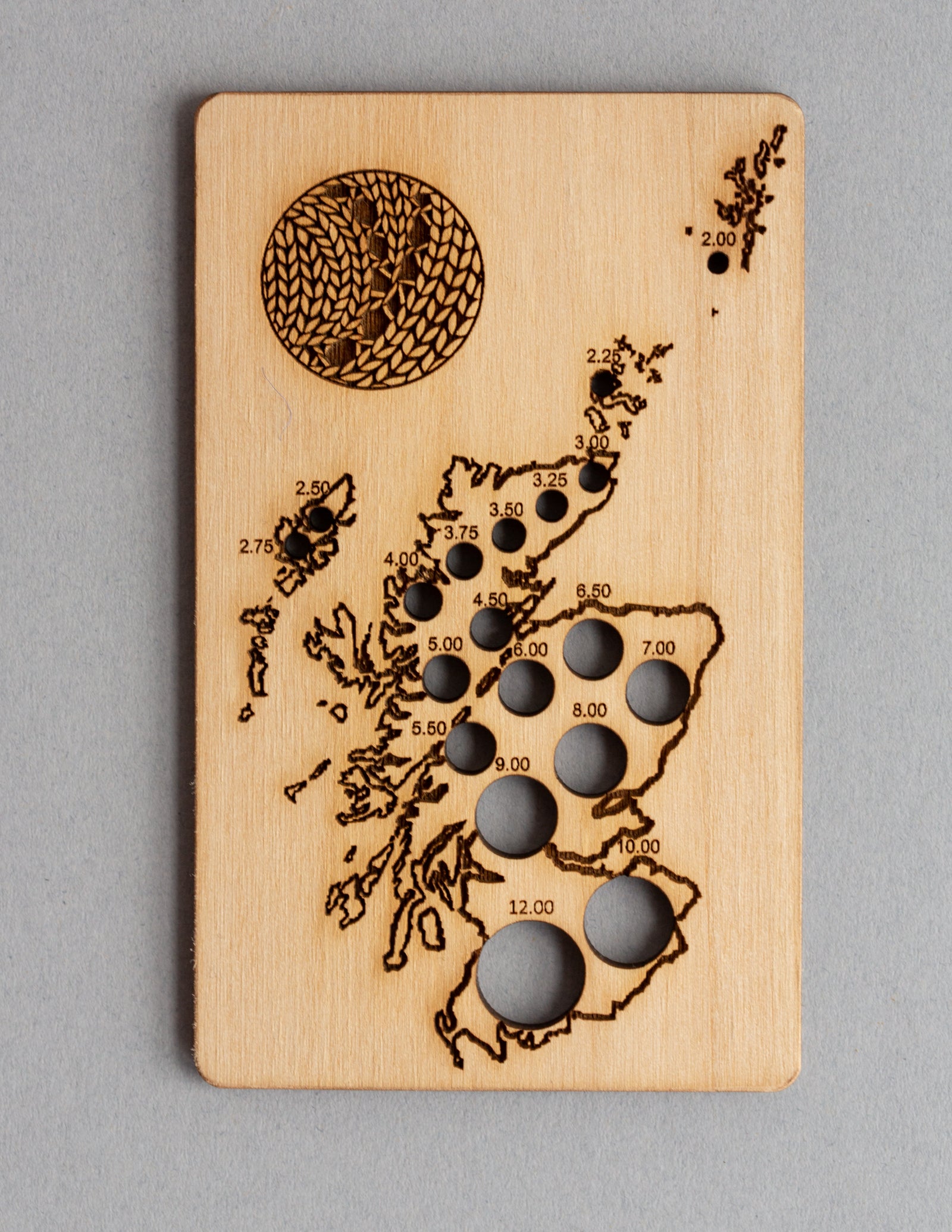
Exclusive Scotland needle gauge by Katrinkles
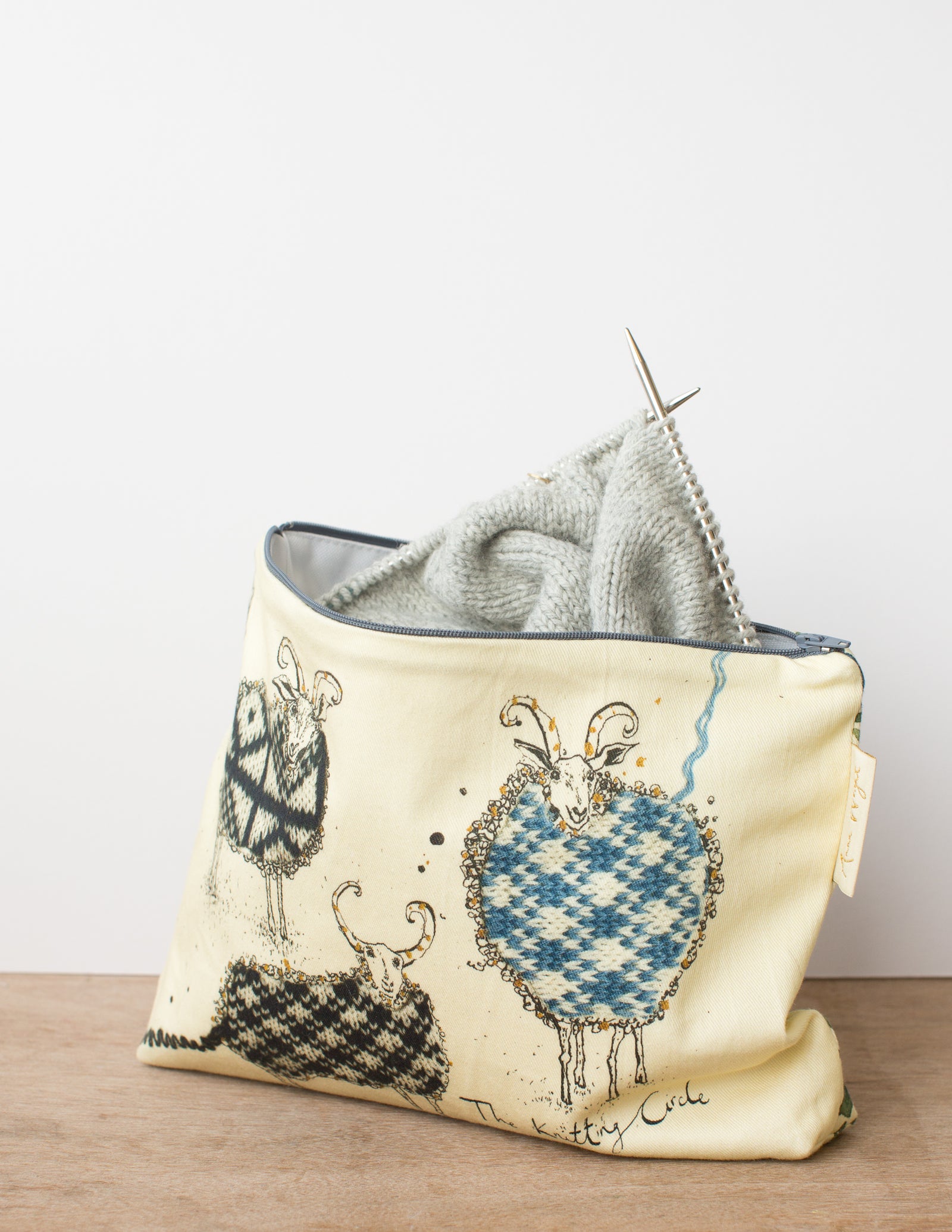
Zippered pouches in two sizes by our studio neighbour Anna Wright

keep small tools accessible with the Maker's Keep
gift 2019
Subscribe to our Colourwork Club for a gift that lasts well into the new year. Your recipient will receive a new colourwork kit in Janurary, February and March
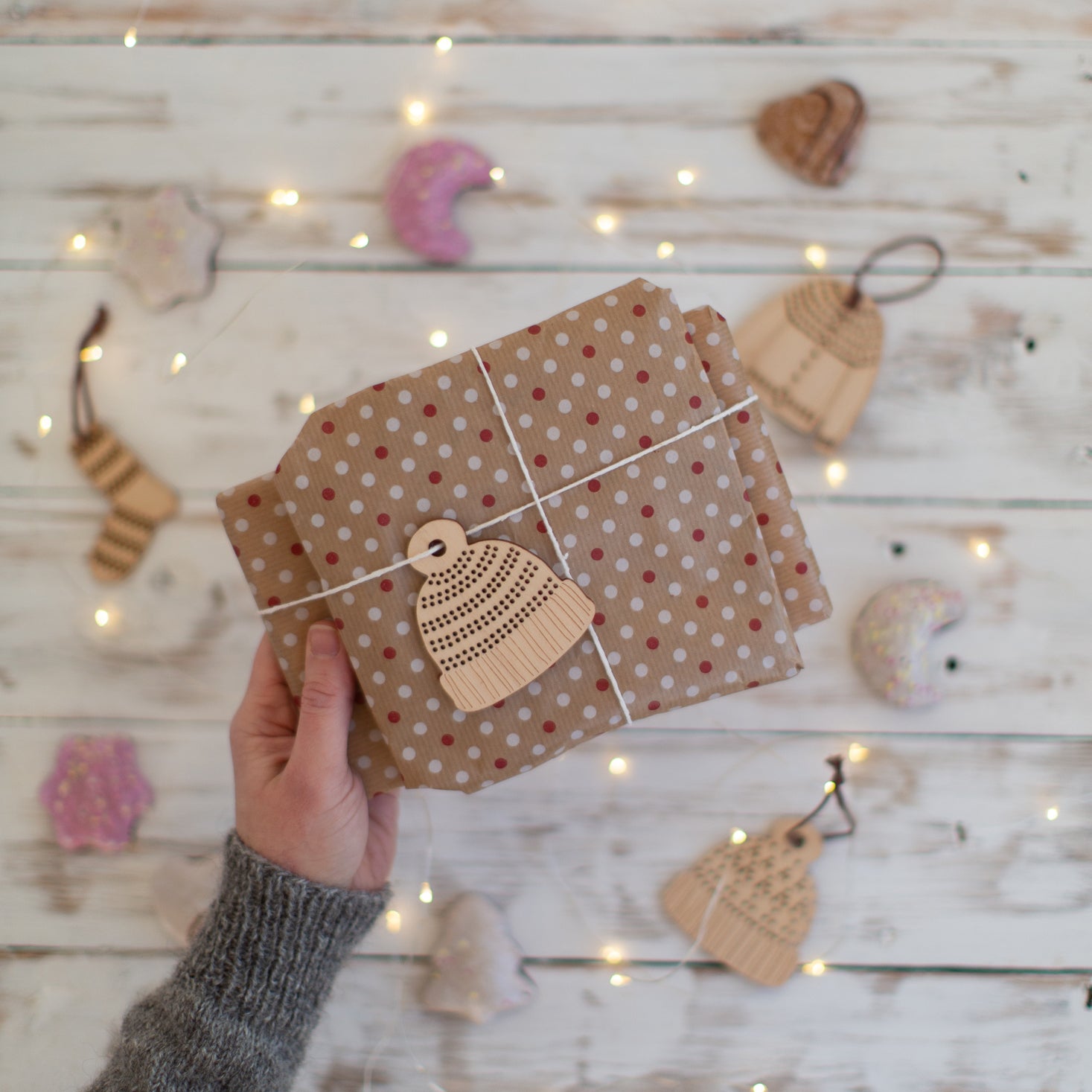
Subscribe to our Colourwork Club for a gift that lasts well into the new year. Your recipient will receive a new colourwork kit in Janurary, February and March

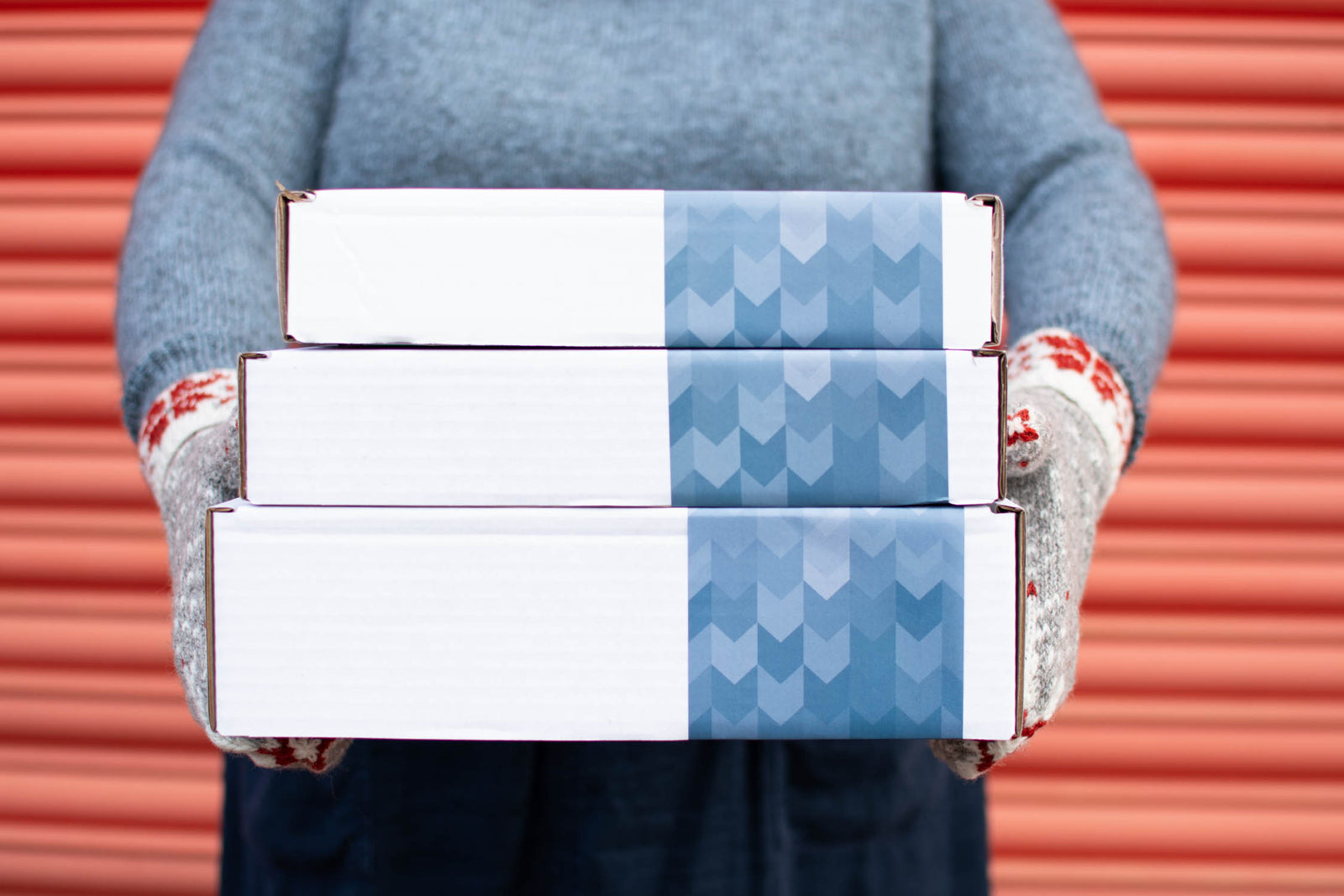
Last minute shopping? Gift cards are delivered electronically - forward the email or print it for your recipient. A range of amounts are available and gift cards don't expire.


How to knit more symmetrical yarn overs
May 01, 2014
Have you ever made a shawl, such as Ishbel, with a garter stitch border and yarn overs worked on every row between the border and the main body of the shawl?
If so you might have found that the yarn overs next to one border were dramatically larger than the ones on the other side. Good news! This problem of non-symmetrical yarn overs isn't caused by bad knitting, and there's an easy way to fix it.
If you need a refresher on the basics of yarn overs before diving into this troubleshooting post, start with our Learn to Knit: Yarn Overs post.
Root Cause of Non-Symmetrical Yarn Overs
So what causes those larger yarn overs before a purl stitch?
A yarn over worked before a purl stitch takes a slightly longer path around the needle, than one worked before a knit stitch, which means more yarn is used and the resulting hole is larger.

How to fix the problem of non symmetrical yarn overs
Working the yarn overs before a purl stitch as reversed (or backwards) yarn overs can reduce the amount of yarn it uses.
To keep the yarn over hole open you'll need to work into the back leg of the yarn over on the following row.

If you are working on a project that has lots of yarn overs between different types of stitches you may want to swatch and alter the yarn over directions so that your yarn overs are of a uniform size throughout your project.
In the swatch below we've included regular and reversed yarn overs between all combinations of knit and purl stitches so you can see the difference in size.
The regular yarn overs are labelled "yo" and the reversed ones are labelled "byo".

Working a regular yarn over — bring the yarn to the front between the two needles and then to the back over the right needle. If the next stitch is a purl bring it to the front between the needles.
Working a reversed yarn over — bring the yarn to the front over the top of the right needle. If the next stitch is a knit bring it to the back between the needles.
Backwards yarn overs result in a stitch that's mounted on the needles with the leading leg at the back. On the following row you'll need to work into the back leg of the stitch to avoid twisting it.
The Advantage of Combining Yarn Overs
As can be seen in the above swatch, regular yarn overs worked between a knit and a purl create a substantially larger hole than they do when the purl stitch comes before the yarn over and the knit stitch comes after.
Working a backwards yarn over between the knit and purl can give a more symmetrical result.
On a shawl like Ishbel all of the yarn overs at the edges on the right side are worked between two knit stitches. But on the wrong side the centre stockinette portion is purled and the garter stitch edges are knit.
Consequently at the beginning of the row you work k3, yo, purl and at the end you work purl, yo, k3. Prevent the yarn overs at one side from being larger by working that first yarn over before a purl backwards.
Don’t forget to knit into the back leg on the next row!

Also in Journal
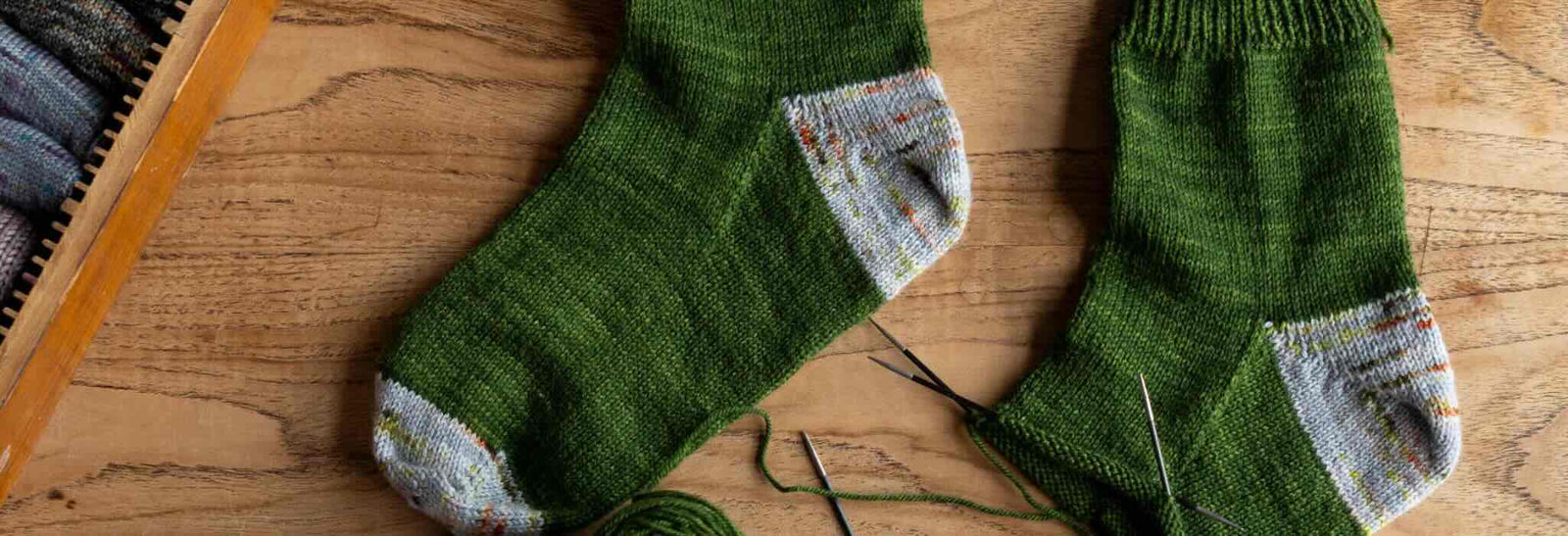
Deep Shadow Heel Tutorial
September 25, 2025

20 Years of Ysolda Knitting Patterns: Part 2
June 23, 2025

20 Years of Ysolda Knitting Patterns: Part 1
June 19, 2025
Recent Articles
-
Deep Shadow Heel Tutorial
September 25, 2025
-
20 Years of Ysolda Knitting Patterns: Part 2
June 23, 2025
-
20 Years of Ysolda Knitting Patterns: Part 1
June 19, 2025
-
Learn to Knit: Mattress Stitch
March 29, 2023
-
How to Knit a Scarf: A Beginners Guide to Scarf Knitting
March 23, 2023
-
Learn to knit: the long tail cast-on
February 03, 2022
-
How to Graft Your Knitting
December 09, 2021
-
Crochet Provisional Cast-on
December 02, 2021
-
Learn to knit: How to knit in the round with double pointed needles
November 25, 2021
-
Learn to knit: How to knit in the round using the magic loop technique
November 25, 2021
Free resources
-
KALS, step-by-step pattern guides and free patterns
Learn brioche with the free Daniel's Hat pattern
Tombreck - a free chevron beanie pattern
Working the brioche neck detail on the Polwarth sweater
Installing a zipper and ribbon, finishing wee Carson
Yarn colour ideas for Threipmuir sweater
Additional colourways for the Joy mitts (choose your pride flag)
How to join the shoulders on Wardie
How to join the pockets on Granton and Wardie
Finishing Resources for Granton
Broughton mittens tutorial part 1
Broughton mittens tutorial part 2
Broughton mittens tutorial part 3
Basics
Casting on
Decorative Channel Island Cast-on
Binding off
3 Easy Stretchy Bind-offs (p2tog bind-off; k2togtbl, k1 bind-off; Jeny's surprisingly stretchy bind-off)
Tubular Bind-off for brioche stitch
Increasing
Paired increase methods compared
How to continue in pattern while increasing and decreasing
Decreasing
Brioche stitch double decreases
Knitting in the round
How to Knit in the round using Magic Loop
How to Knit in the round using DPNs
Short rows
Swatching and gauge
Tips and tricks
Avoiding ears when binding off
Tighter purl stitches for neater cables and ribbing
Cabling without a cable needle
How to knit more symmetrical yarn overs
Bust darts in sweaters with all over stitch patterns
A magic formula for evenly distributing shaping
Superwash v Non-Superwash Wool
Picking up sts from the middle of the fabric
Reading knitting patterns
Understanding "continue in pattern"
Help! Where am I in my knitting project?
Using charts, even if you hate them
Finishing
Garment knitting
Joining the body and sleeves on a seamless bottom up sweater
Sizing
Ysolda’s sizing chart for knitwear designers
Inclusive garment knitting
How to pick a garment without a model for you (specifically addresses finding garment patterns when your gender identity isn't represented and the styles you want to knit might not be sized to fit your body)
How does ease affect inclusive size ranges?
Specific stitch patterns
Lace
Identifying and fixing mistakes in lace knitting
Colourwork
Getting started with stranded colourwork
Understanding colour dominance
Working stranded colourwork over small circumferences
Decreases in stranded colourwork
Holding the yarn for stranded colourwork
Ladderback Jacquard (a neat way to deal with long floats)
Cables
Cabling without a cable needle
Cabling without a cable needle on the wrong side
How to knit cabled decreases
Closed ring cable increases and decreasesBrioche
How to work brioche stitch in the round
Other crafts
Cross stitch
How to begin your first large cross stitch project
How to finish a cross stitch project with an embroidery hoop frame
Mending

Sign up today
Find out the latest news from the studio such as sales, pattern releases, and new workshops or KALs our learning community, The Knitwork. We also share helpful tips and exclusive subscriber discounts...



